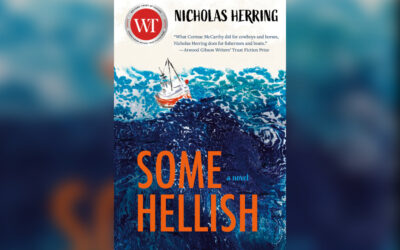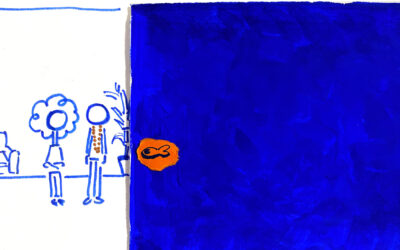Literature
Trailing Clouds of Glory
Beneath the ordered cerebration of waking hour, beyond the sober images reeling before us, lurks a chimera of hypnagogic mirages and mauve phantoms. It is the shadowland where illicit lovers, infertile mothers, and poets embrace their ghosts and mourn their unborn. Women find themselves thrown into this dim realm of flickering forms at that late hour when the departure of their men abandons them to anxious conjectures of a life that could even now turn in their womb and mould into flesh with the ripening of time.
Review: Some Hellish by Nicholas Herring
A quick scan of tourism sites for Prince Edward Island brings up photographs of red sand and lighthouses, as well as the occasional image of a redheaded young girl with two braids. Nicholas Herring’s novel Some Hellish is firmly planted on that same island but could not be farther from the bright whimsy of travel advertisements or children’s book covers. It follows a middle-aged fisherman, who shares the name Herring, quietly experiencing an existential crisis of sorts while going through the motions of his daily and seasonal work.
The Mediterranean in a Condo
“Why is there only one fish?” I asked him.
In his new place, I saw he had a huge aquarium. Where there should be a window from floor to ceiling, he had an aquarium, with one goldfish inside. What’s the word for an aquarium that has only one fish? Is it an aquarium or is it an artwork? I wondered if he was doing something similar to Marco Evaristti’s Helena with the fish and the huge tank: some sort of sadistic gesture.
Khashayar Mohammadi’s WJD: an English-Language Introduction to Islamicate Nuance
Since the dawn of ‘Western’ civilization, it’s been customary for aging pop-intellectuals (or whatever the equivalent role was at a given time) to point to a dichotomy between the East and West. Today, and excuse my polemics, mediocre faux-intellectuals point to a regressive, ecclesiastical East dominated by Imams and oligarchs, and contrast it with a progressive, technocratic, civilized West. WJD, a collection of poetry from Khashyar Mohammadi, is an ethnography of the margins of the Islamicate world, and, in my eyes, a scathing critique of Euro-American reductionism and today’s incarnation of orientalism.
Reading Bogotá, Colombia as an Apocalipsis by Mario Mendoza
The tricky aspect about loving your hometown is that it’s difficult to explain why. You are more than willing to defend your homeplace when someone else takes a hit against it, but you are also its harshest critic—or, at least, that is the case for me.
Introducing Terminally Online Lovecraftian Comedy
I experience the existential horror of sci-fi literature in a strange, almost counterintuitive way. While it seems that I’m immune to Lovecraft’s insidious neuroticism, I experience unbound dread and awareness of my own minuteness when I read the sprawling space operas of Isaac Asimov. I always read the former casually tearing through an increasingly decrepit anthology of stories my mother bought me for my birthday one year, but I shudder at the thought of ever touching anything written by H.G. Wells. For me, Lovecraft’s At the Mountains of Madness is a romantic romp through Antarctica’s ancient past, but narratives of intergalactic empires and cyborgs grim reminders that time is running out and everything returns to dust. In my relatively uncreative mind, I used to implicitly assume that these two sides of fiction were never bound to intersect; that changed when I was sifting through shitposts one day and came across, alas, a serious post from Instagram user @theclockspider!







